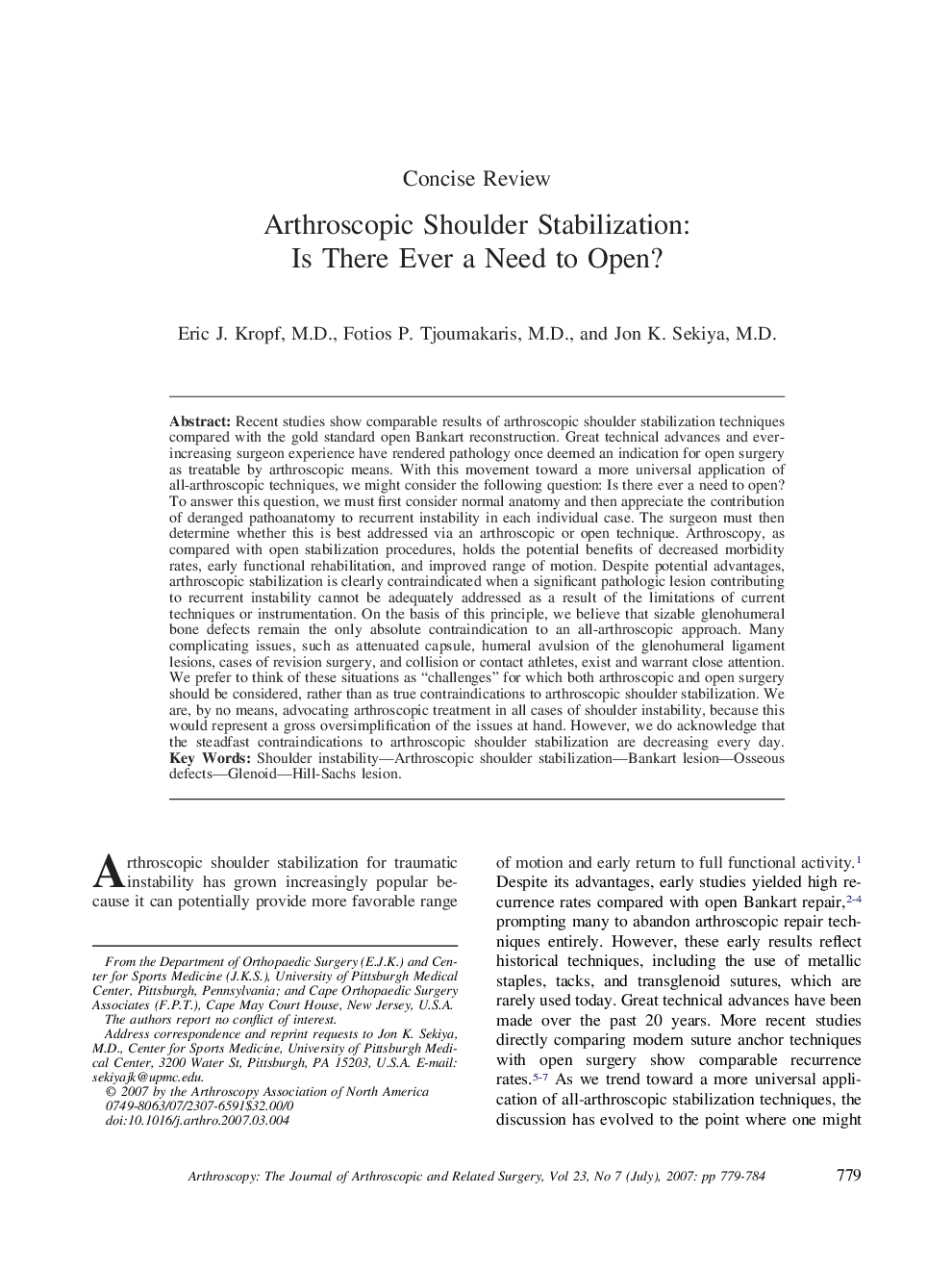| Article ID | Journal | Published Year | Pages | File Type |
|---|---|---|---|---|
| 4046709 | Arthroscopy: The Journal of Arthroscopic & Related Surgery | 2007 | 6 Pages |
Recent studies show comparable results of arthroscopic shoulder stabilization techniques compared with the gold standard open Bankart reconstruction. Great technical advances and ever-increasing surgeon experience have rendered pathology once deemed an indication for open surgery as treatable by arthroscopic means. With this movement toward a more universal application of all-arthroscopic techniques, we might consider the following question: Is there ever a need to open? To answer this question, we must first consider normal anatomy and then appreciate the contribution of deranged pathoanatomy to recurrent instability in each individual case. The surgeon must then determine whether this is best addressed via an arthroscopic or open technique. Arthroscopy, as compared with open stabilization procedures, holds the potential benefits of decreased morbidity rates, early functional rehabilitation, and improved range of motion. Despite potential advantages, arthroscopic stabilization is clearly contraindicated when a significant pathologic lesion contributing to recurrent instability cannot be adequately addressed as a result of the limitations of current techniques or instrumentation. On the basis of this principle, we believe that sizable glenohumeral bone defects remain the only absolute contraindication to an all-arthroscopic approach. Many complicating issues, such as attenuated capsule, humeral avulsion of the glenohumeral ligament lesions, cases of revision surgery, and collision or contact athletes, exist and warrant close attention. We prefer to think of these situations as “challenges” for which both arthroscopic and open surgery should be considered, rather than as true contraindications to arthroscopic shoulder stabilization. We are, by no means, advocating arthroscopic treatment in all cases of shoulder instability, because this would represent a gross oversimplification of the issues at hand. However, we do acknowledge that the steadfast contraindications to arthroscopic shoulder stabilization are decreasing every day.
